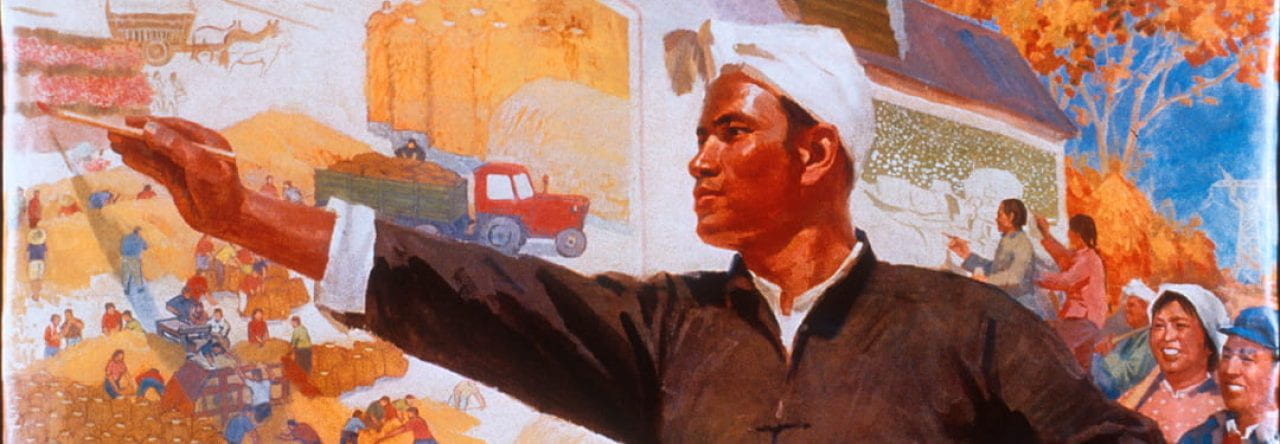图在东西之间, Figure Between East and West
As an artist, Zhang Hongtu seems to constantly be navigating the theme of East and West in his work. Zhang Hongtu, 张宏图,born in 1943 and still living today, gained fame in the 1980s and 1990s initially for his series of paintings of trivializing depictions of Mao, such as replacing the farmer on a Quaker Oats box with Mao1. Zhang became notable for fusions of Eastern and Western symbols like these. While Zhang’s transformations of Mao’s image in pieces such as The Last Supper and his Material Mao series contain powerful political and social critiques, they were personal to Zhang Hongtu as well. Having lived through the Cultural Revolution (1966-76) Zhang Hongtu had personally experienced its paranoia and repression. When he moved to New York in 1982 he was able to freely explore his own relationship with Mao’s icon and question Mao’s image. With the newfound freedom of the Western world Zhang Hongtu was able to further investigate the exchange of ideas between East and West.
With Zhang Hongtu’s later work there features a more introspective examination of Western and Eastern artistic movements and philosophies with similarities being aptly pointed out by the artist such as the comparison of Van Gogh and Bodhidharma in the Van Gogh – Bodhidharma series2. Zhang Hongtu’s use of the theme of East and West goes beyond the use of Western motifs to examine the East but to also break down the duality of an East and West split such as in his Sanshui series where he uses impressionist brushwork to recreate famous Chinese ink and brush paintings3. The theme of East and West then no longer serves as an antagonistic relationship but transforms into one of self-recognition as the artist’s philosophy evolves.
- Zhang Hongtu, Interview with Jane DeBevoise. Materials of the Future: Documenting Contemporary Chinese Art From 1980-1990. New York City: Asia Art Archive, 2009
- Zhang, Hongtu, Interview with Martin Powers, Ars Orientalis Volume 49, Michigan Publishing, 2018
- Lee, Luchia Meihua, Jerome Silbergeld, and Julia Frances Andrews. Zhang Hongtu: Expanding Visions of a Shrinking World. Queens, NY: Queens Museum, 2015.


